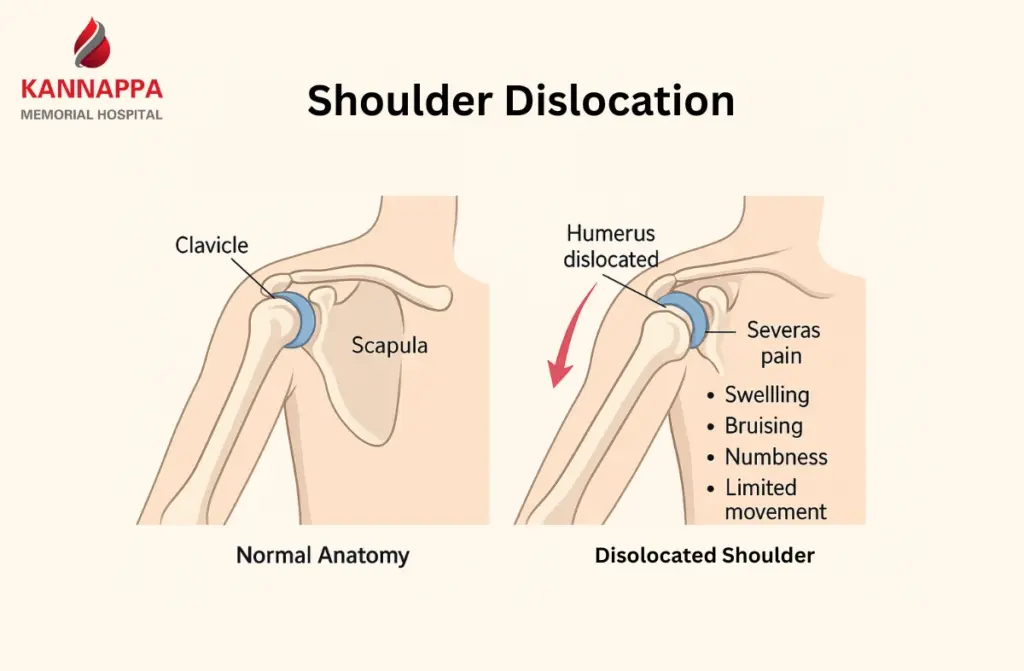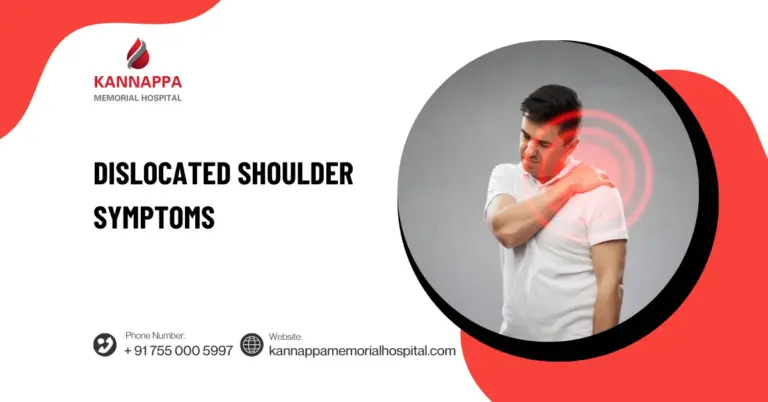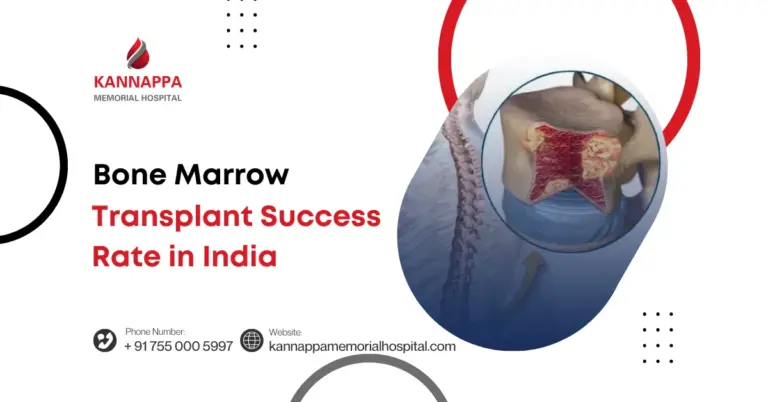Shoulder symptoms refer to any signs or sensations indicating an issue within the shoulder joint or surrounding structures. These can range from mild discomfort and stiffness to intense pain or loss of mobility. Because the shoulder is the body’s most mobile joint, it’s especially prone to injury and instability. One of the more serious conditions is a dislocated shoulder when the upper arm bone pops out of the shoulder socket. Dislocated shoulder symptoms often appear suddenly and can significantly impact daily activities, requiring immediate medical attention.
What is a Shoulder Dislocation?
A shoulder dislocation happens when the top of the upper arm bone (humerus) slips out of its normal position in the shallow cavity of the shoulder blade (glenoid). This condition occurs frequently because the shoulder’s extensive range of movement makes it more prone to becoming unstable.
- Severe Pain and Immobility: One of the most immediate dislocated shoulder symptoms is intense pain, especially during any arm movement. The shoulder may become visibly misshapen, and even slight attempts to move it can worsen the discomfort.
- Noticeable Misalignment and Sagging Shoulder: A clear indicator of a dislocated shoulder is an abrupt change in shape, often seen as a drooping or uneven shoulder appearance. The injured side may appear lower or flattened compared to the uninjured side due to the bone being out of place.
- Swelling, Bruising, and Muscle Spasms: Inflammation quickly sets in, often accompanied by bruising and muscle spasms. These symptoms contribute to additional pain and can mask underlying shoulder joint dislocation symptoms such as torn ligaments or nerve involvement.
- Tingling or Numbness in the Arm or Hand: Nerve compression or stretching during dislocation may lead to abnormal sensations like tingling, burning, or numbness. This is a red flag that the dislocation might be affecting more than just the joint itself.
- How to Fix a Dislocated Shoulder: Immediate treatment usually involves a closed reduction, where a trained medical professional gently manipulates the shoulder back into place.

Types of Dislocated Shoulders
Shoulder dislocations are classified based on the direction in which the humeral head moves out of the glenoid socket. Understanding the different types helps in recognizing specific shoulder joint dislocation symptoms and choosing the appropriate treatment approach.
- Anterior Dislocation: Anterior shoulder dislocation, the most common type, causes pain, deformity, limited rotation, often from traumatic injury.
- Posterior Dislocation: Less common, this type happens when the humeral head moves backward, typically caused by seizures or electrical shocks. Signs of a dislocated shoulder in such cases may be subtle, leading to delayed diagnosis.
- Inferior Dislocation: Inferior shoulder dislocation, or luxatio erecta, causes severe pain, arm stuck overhead, with neurovascular risks.
- Recurrent or Chronic Dislocations: Recurrent shoulder dislocations occur easily from weak ligaments, causing instability, pain, and often requiring surgical treatment.
What are Dislocated Shoulder Symptoms?
Recognizing dislocated shoulder symptoms promptly is essential for preventing long-term complications and ensuring proper treatment.Being aware of both visible and subtle signs of a dislocated shoulder can help guide immediate action, just as early diagnosis is critical in knee treatment.
- Sudden and Severe Shoulder Pain: One of the most immediate shoulder joint dislocation symptoms is intense, sharp pain that worsens with any arm movement. The pain typically centers around the upper or front part of the shoulder and can extend down into the arm.
- Restricted or Absent Mobility: Following a dislocation, lifting or moving the arm becomes very challenging or may not be possible at all. Any attempt to raise, rotate, or extend the arm typically increases the pain and may indicate structural damage around the joint.
- Visible Shoulder Deformity: A noticeable change in the contour of the shoulder is a classic sign. The shoulder may appear flattened or out of place, often with a prominent bump under the skin indicating the displaced humeral head.
- Swelling, Bruising, and Warmth: The injured area often becomes swollen and discolored within minutes to hours. This inflammatory response is a common part of dislocated shoulder symptoms and may also include warmth and tenderness to touch.
- Numbness, Tingling, or Weakness: When nerves are compressed or stretched during dislocation, symptoms such as numbness in the hand or fingers can occur. These neurological signs of a dislocated shoulder require urgent evaluation to avoid permanent nerve damage.
What Causes Shoulder Dislocations?
Shoulder dislocations are often the result of direct trauma or extreme arm movement that forces the humeral head out of its socket. Given the shoulder’s wide range of motion and relatively shallow joint, it is more vulnerable to instability.
- Trauma from Falls or Accidents: Falling on an outstretched arm or shoulder impact causes immediate pain, swelling, and restricted mobility.
- Sports Injuries: High-impact sports collisions or awkward movements can cause anterior or posterior dislocations, limiting shoulder function.
- Repetitive Overhead Motion: Athletes with repetitive overhead movements risk ligament laxity, recurring dislocations, and persistent shoulder instability.
- Previous Dislocations and Joint Instability: Past shoulder dislocations weaken ligaments, increasing likelihood of recurrence with minimal trauma or stress.
What are the Complications of a Dislocated Shoulder?
A dislocated shoulder, if not managed properly, can lead to various short- and long-term complications that impact joint function, stability, and overall mobility. Recognizing these risks alongside dislocated shoulder symptoms helps guide treatment and prevent chronic problems.
- Chronic Shoulder Instability: One of the most common complications is repeated dislocations due to weakened ligaments or structural damage. This condition leads to persistent shoulder joint dislocation symptoms, including a feeling that the shoulder may “give out” during certain movements.
- Nerve or Circulatory Damage: When the shoulder dislocates, nearby nerves or blood vessels may become pinched or damaged. Patients may experience numbness, tingling, or reduced blood flow to the arm, which are serious signs of a dislocated shoulder that require immediate medical attention.
- Rotator Cuff Tear: The rotator cuff, especially in older adults, is susceptible to tearing during a dislocation. This damage can cause long-term pain, weakness, and limited range of motion, complicating both daily tasks and rehabilitation efforts for how to fix a dislocated shoulder.
- Fractures Around the Shoulder Joint: In some cases, the dislocation is accompanied by a fracture of the humerus or scapula. These injuries make the recovery more complex and prolong healing time, often intensifying dislocated shoulder symptoms such as swelling and immobility.
- Post-Traumatic Arthritis: Over time, repeated dislocations or joint damage may lead to degenerative changes in the shoulder. Post-traumatic arthritis can result in chronic pain, stiffness, and difficulty with overhead activities, adding another layer of challenge to long-term joint care.
How are Dislocated Shoulders Diagnosed?
Diagnosing a shoulder dislocation involves a combination of physical examination, patient history, and imaging techniques to confirm the injury and assess its severity. Medical professionals evaluate both the dislocated shoulder symptoms and the extent of damage to surrounding tissues.
- Physical Examination and Symptom Review: A doctor begins by assessing shoulder joint dislocation symptoms, such as intense pain, visible deformity, swelling, and restricted movement. They may gently check for instability, unusual shoulder contour, and ask about the exact moment of injury to understand the mechanism of dislocation.
- Neurological and Vascular Assessment: Dislocations can compress or stretch nerves and blood vessels in the area. Physicians check for numbness, tingling, or weak pulse in the arm and hand, as these signs of a dislocated shoulder may indicate further complications requiring urgent intervention.
- X-rays and Imaging Tests: X-rays are typically ordered to confirm the direction of the dislocation anterior or posterior and to rule out fractures. In some cases, MRI or CT scans are used to detect soft tissue injuries like labral tears or rotator cuff damage, helping guide decisions on how to fix a dislocated shoulder effectively.
How are Dislocated Shoulders Treated?
Treatment for shoulder dislocations focuses on repositioning the joint, managing dislocated shoulder symptoms, and preventing future instability.
- Closed Reduction Technique: This is the initial step in how to fix a dislocated shoulder, where a trained physician gently maneuvers the upper arm bone back into its socket without surgery. Once the shoulder is back in place, pain relief is usually immediate, and range of motion gradually improves.
- Immobilization and Rest: After the joint is relocated, the arm may be placed in a sling or shoulder immobilizer for a few weeks. This allows healing of ligaments and soft tissues, especially in cases with shoulder joint dislocation symptoms like tenderness, weakness, or swelling.
- Physical Therapy and Rehabilitation: Once the initial inflammation subsides, rehabilitation begins with guided exercises to restore strength and flexibility. Targeted therapy helps reduce the risk of repeat injuries, particularly in individuals with recurring signs of a dislocated shoulder.
- Surgical Intervention (If Needed): Repeated dislocations or associated structural damage, such as labrum tears, may require surgery. Procedures aim to tighten or repair the shoulder capsule and supporting tissues to provide lasting stability.
Can You Prevent a Shoulder Dislocation?
Although accidents cannot always be avoided, proactive measures can help reduce the likelihood of shoulder dislocation, especially for people involved in activities with higher injury risks. Awareness of shoulder joint dislocation symptoms and early recognition of warning signs can also play a vital role in long-term prevention.
- Strengthening Shoulder Stability: Exercises that target the rotator cuff and surrounding muscles create stronger support for the joint. With improved stability, the shoulder is less likely to shift out of place even under stress.
- Maintaining Flexibility and Balance: A flexible shoulder adapts more easily to sudden movements without overstretching or tearing ligaments. Balanced mobility prevents stiffness and decreases the chances of showing initial signs of a dislocated shoulder.
- Managing Repetitive Stress: Continuous overhead motions in sports or work settings may weaken tissues over time. Adjusting technique, including rest periods, and practicing corrective strengthening routines can reduce stress that contributes to recurrent shoulder joint dislocation symptoms.
- Protecting During Physical Activity: Using safety gear, following correct techniques, and preparing the body before strenuous activity reduce injury risks. Preventive strategies such as learning safe landing methods can help avoid circumstances that later require learning how to fix a dislocated shoulder.
Conclusion
Recognizing dislocated shoulder symptoms early is crucial for preventing complications and promoting faster recovery. Symptoms such as intense pain, visible deformity, limited movement, and numbness in the arm are strong indicators that the shoulder joint may have dislocated. Prompt diagnosis using physical exams and imaging can guide effective treatment whether through closed reduction, rest, or surgery. Ignoring shoulder joint dislocation symptoms may lead to chronic instability or repeated injuries. If you or someone experiences signs of a dislocated shoulder, seek medical evaluation without delay. Early intervention significantly improves outcomes and helps restore normal shoulder function efficiently.
Read Also: Orthopedic Hospitals in Chennai











